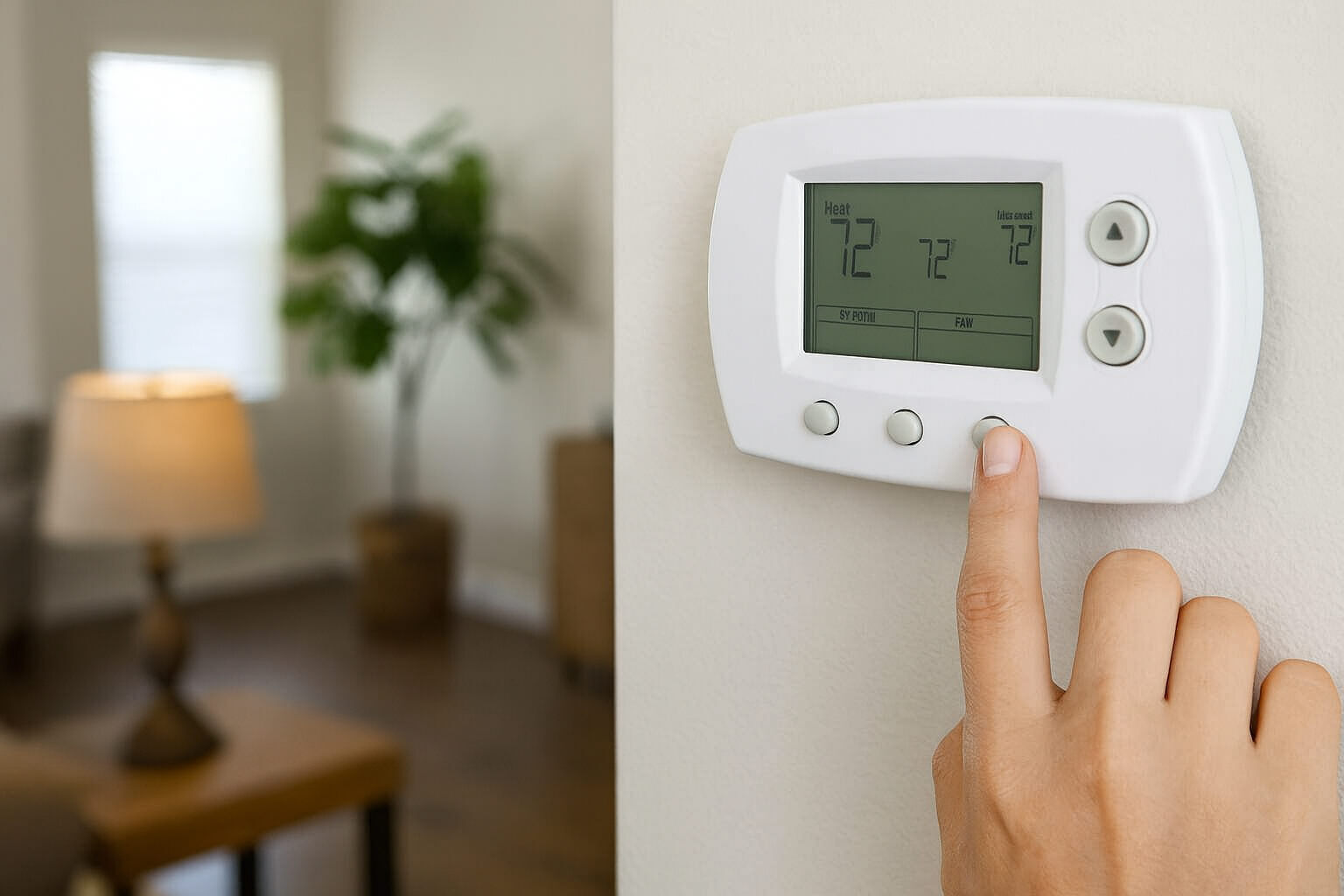Over the last ten years, the expense of heating and powering homes has steadily climbed, putting pressure on household budgets. However, with a few surprisingly easy adjustments at home, it’s possible to cut costs without giving up comfort or ease. Simple actions like changing lightbulbs or modifying laundry habits can lead to noticeable savings. This guide offers practical tips to help you reduce energy expenses and keep more cash in your wallet year-round.
1. Swap to LED Light Bulbs
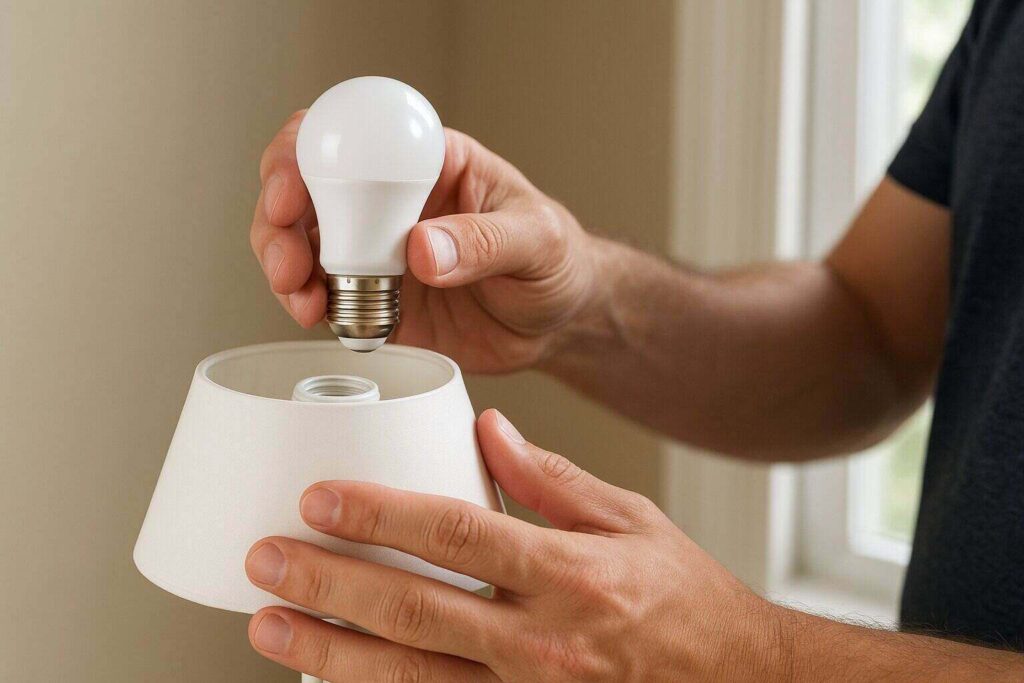
Traditional incandescent bulbs might feel cozy, but they’re notorious energy guzzlers. In comparison, LED bulbs use up to 90% less energy and can last more than 20 years with typical use, resulting in fewer replacements and long-term cost savings.
Think about this: swapping out the five most frequently used light fixtures in your home for LED bulbs could save you around $75 per year, as estimated by the U.S. Department of Energy (DOE). LEDs emit less heat, which can help lower cooling expenses during the summer months.
Although LED bulbs may cost a bit more initially, their long lifespan and energy efficiency make them a wise choice in the long run. For instance, a $3 LED that runs for 25,000 hours easily outperforms a $1 incandescent bulb that typically lasts just 1,000 hours.
Choose bulbs marked “Energy Star Certified” to ensure they meet strict efficiency standards. Available in different brightness levels and colour tones, LEDs can enhance any space, offering soft white for cosy areas and daylight tones ideal for task lighting.
2. Install a Programmable Thermostat
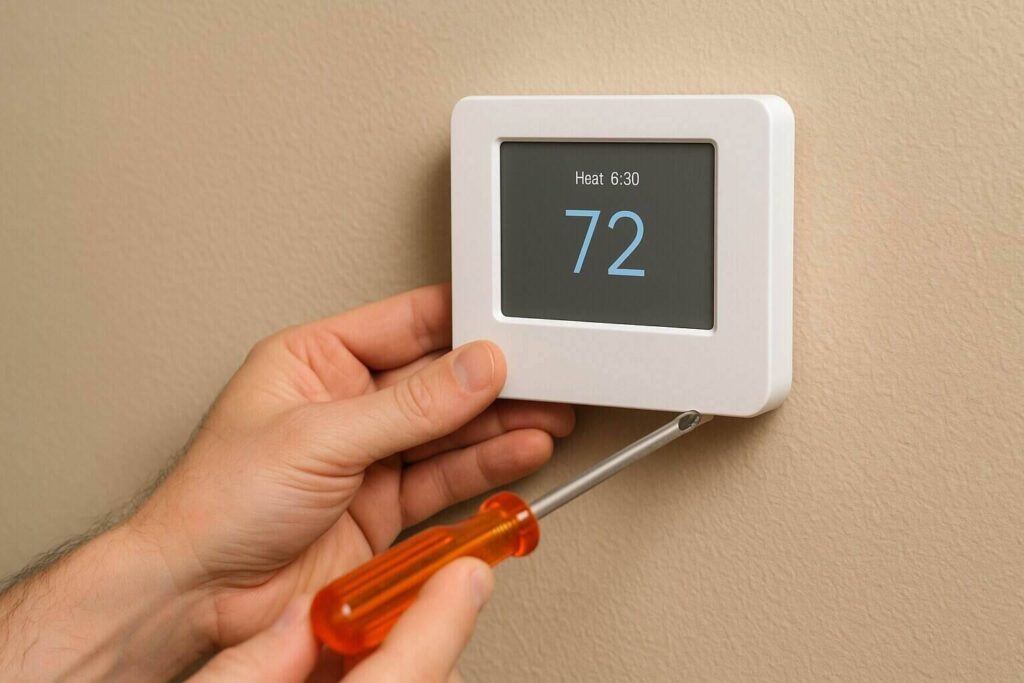
Heating and cooling use nearly half of a home’s energy. A programmable thermostat saves money by adjusting temperatures automatically based on your routine. Lowering it by 7–10°F for eight hours daily can cut energy bills by about 10%, says the U.S. Department of Energy.
Smart thermostats offer remote control and detect when you’re away, boosting efficiency without sacrificing comfort.
Manual adjustments are often forgotten, wasting energy. Check HVAC compatibility before buying. Though prices range from $50 to $250, utility rebates can reduce upfront costs.
3. Seal Air Leaks Around Windows and Doors
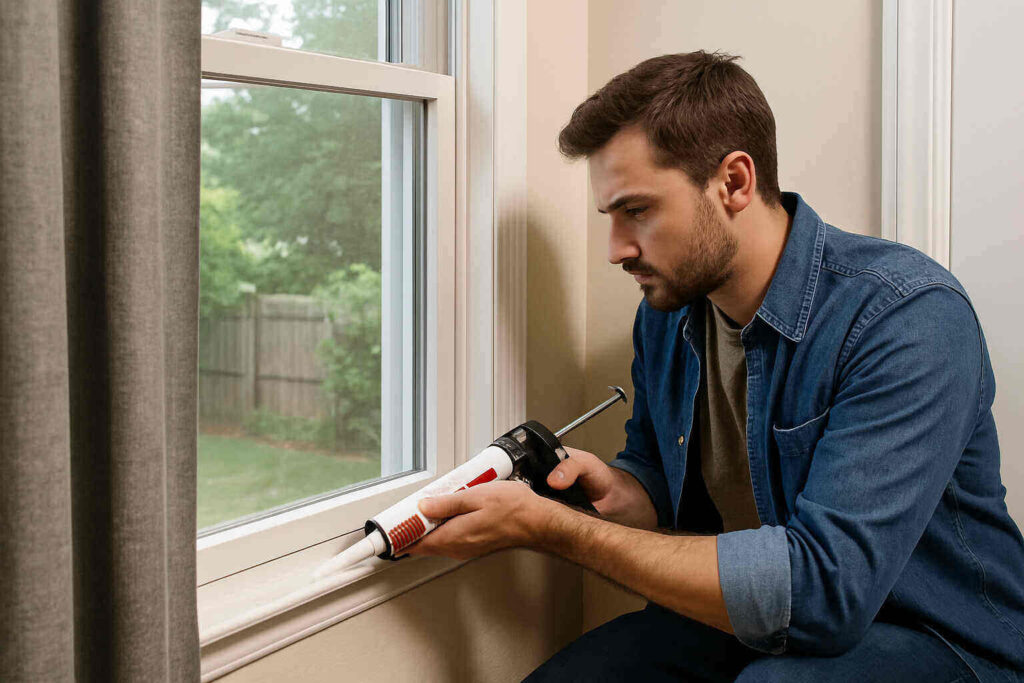
Drafty windows and doors let heated or cooled air escape, making your HVAC work harder and increasing bills. Sealing gaps around windows, door frames, baseboards, and pipes—using caulk or weather stripping—can cut energy costs. The EPA says this can save about 15% on heating and cooling, adding up to hundreds annually. To find leaks, hold a lit incense stick near suspected areas on a windy day; drifting smoke means a leak. This quick, low-cost DIY fix offers immediate savings without major renovations.
4. Lower Your Water Heater Temperature
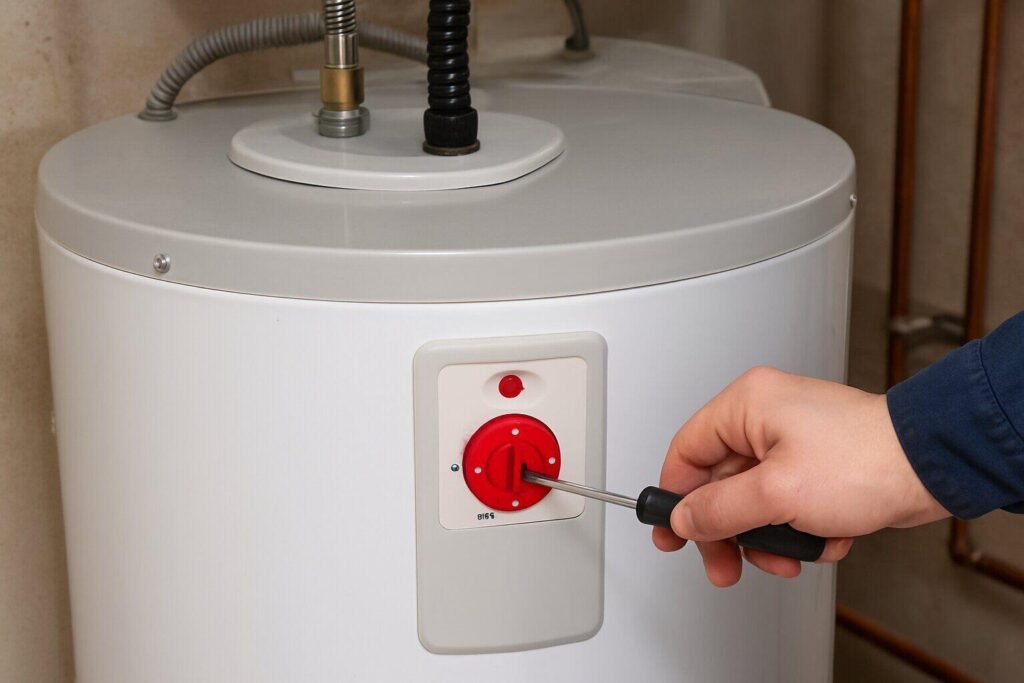
Many water heaters default to 140°F, but lowering to 120°F boosts safety and saves energy. The DOE says this can cut heating costs by 4–22%. At 140°F, scalding risks rise, especially for kids and seniors. Reducing temperature also lessens mineral buildup, extending tank life. Heating water to 140°F uses much more energy than to 120°F due to increased heat loss. Adjust settings via your heater’s manual—tankless models have digital controls; tank heaters use a dial. Check dishwasher guidelines to ensure 120°F water cleans effectively.
5. Use Smart Power Strips
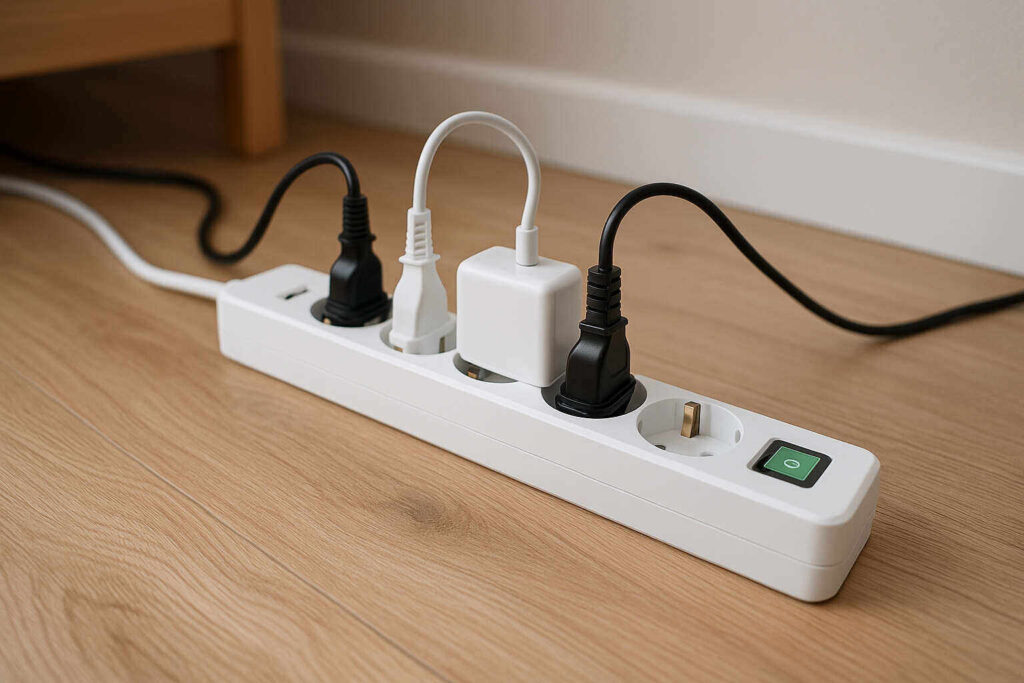
Many electronics draw power even when off, called “phantom load,” including TVs, consoles, and chargers. Smart power strips cut power to idle devices, reducing this waste. The National Renewable Energy Laboratory estimates phantom loads cause 5-10% of home electricity use, costing $100-$200 yearly. Unlike regular strips, smart ones can shut off after inactivity or when the main device powers down. Using them in home offices or entertainment centres stops devices from draining power overnight. Priced at $20-$40, smart strips often pay for themselves within months.
6. Wash Clothes in Cold Water

Heating water can use up to 90% of a washing machine’s energy, says ENERGY STAR. Modern detergents clean well in cold water, saving about $60 yearly and protecting fabric colours and fibres. Hot water is mainly needed for heavily soiled items like towels or bedding. For everyday laundry, cold water is effective. To address germs, use cold-water sanitising detergent or run occasional hot washes for linens. Washing in cold water cuts costs, preserves clothes, and benefits the environment.
7. Maintain Your HVAC System
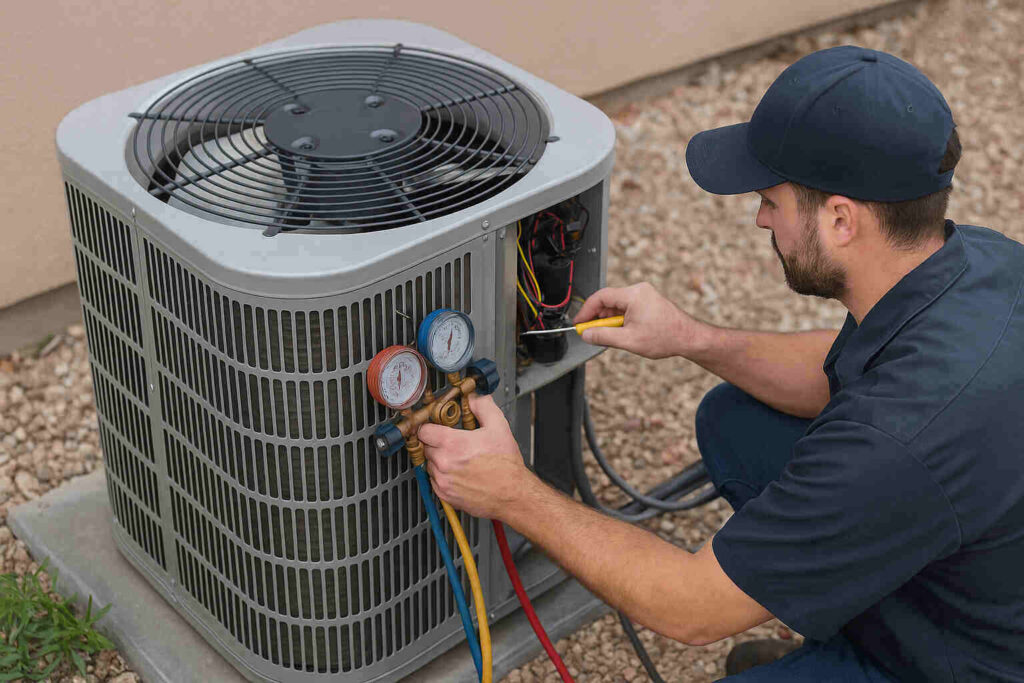
Poorly maintained HVAC systems work harder, using more energy and increasing utility costs while risking malfunctions. Regular upkeep improves efficiency and extends lifespan. The DOE advises replacing or cleaning filters every 1–3 months to cut energy use by 5–15%, as dirty filters restrict airflow. Annual HVAC tune-ups, costing $75–$200, help prevent costly repairs by checking refrigerant, coils, and electrical parts. Keep vents clear and outdoor units free of debris. Proper maintenance saves energy and keeps your home comfortable year-round.
8. Upgrade to Energy-Efficient Appliances
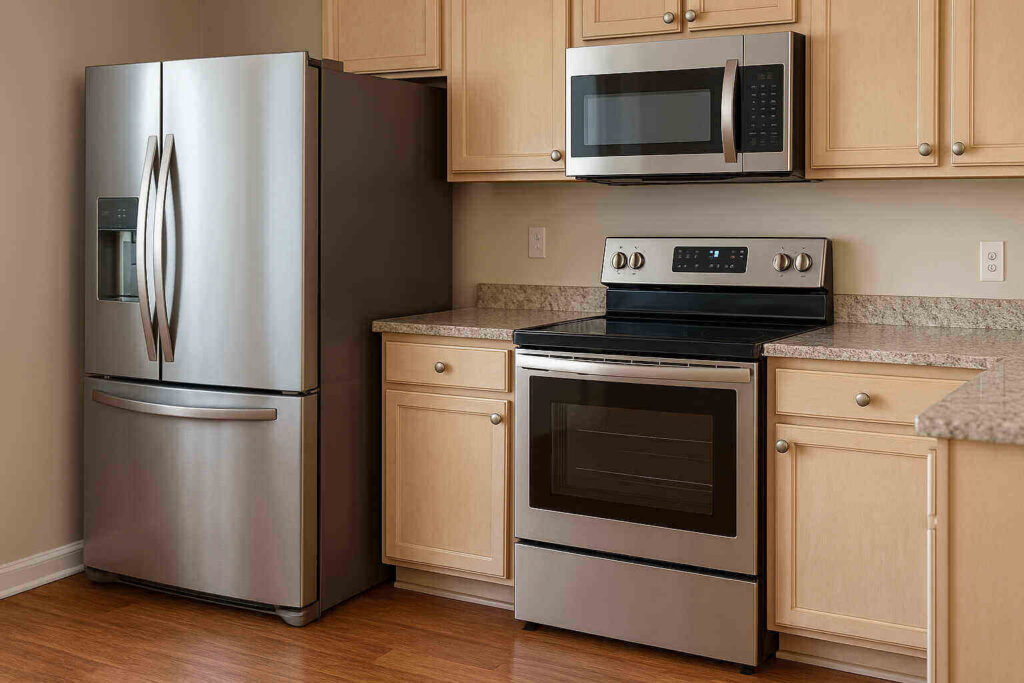
Older appliances usually use more energy than modern Energy Star models. For example, a 1990s fridge can consume up to three times more electricity than newer ones, says the EPA. Although upgrading costs money upfront, it can save $30–$50 annually on washers or dishwashers and over $100 on fridges. Check EnergyGuide labels for yearly operating costs, and look for rebates from utilities or manufacturers to reduce expenses. Energy-efficient appliances save money and cut greenhouse gas emissions, benefiting both your wallet and the planet.
9. Unplug Chargers When Not in Use
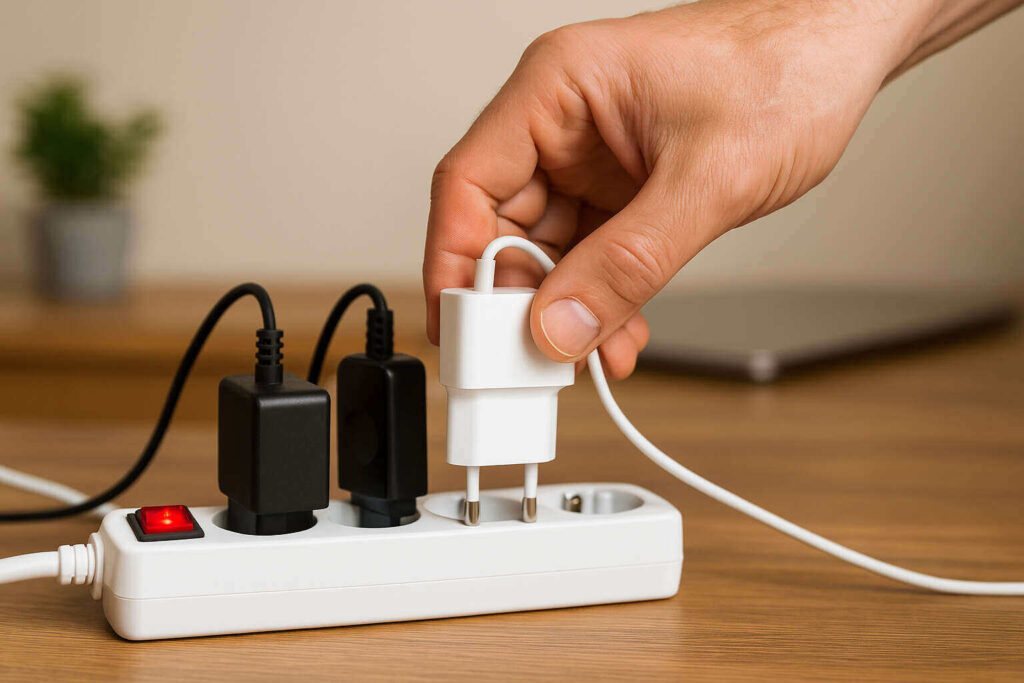
Phone, laptop, and other device chargers use electricity even when not charging, called “vampire power.” NRDC estimates this costs U.S. households $19 billion yearly. Though each charger uses little power, together they add $50-$100 to annual bills. Leaving chargers plugged in versus unplugging daily can significantly impact energy use, especially in gadget-heavy homes. A simple way to save is to connect chargers to a power strip and turn them off when not in use—an easy habit that reduces wasted energy and lowers costs.
10. Use Ceiling Fans Strategically
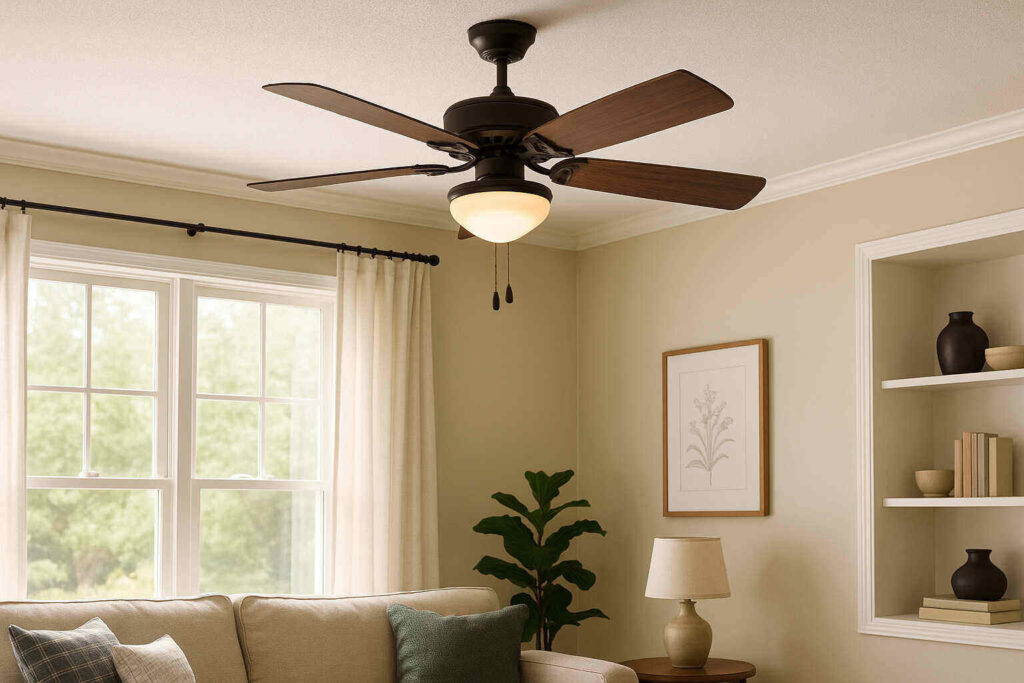
Ceiling fans don’t cool rooms, but create a wind-chill effect by moving air over your skin. Used properly, they let you raise your thermostat by up to 4°F in summer without discomfort, says the DOE. In winter, reversing the fan pushes warm air down, reducing heating needs. Fans use about 75 watts versus over 3,500 watts for air conditioners, saving energy. Turn fans off when leaving a room since they cool people, not spaces. Choose Energy Star–rated fans with efficient motors and LED lights for best results.
11. Cook with Small Appliances
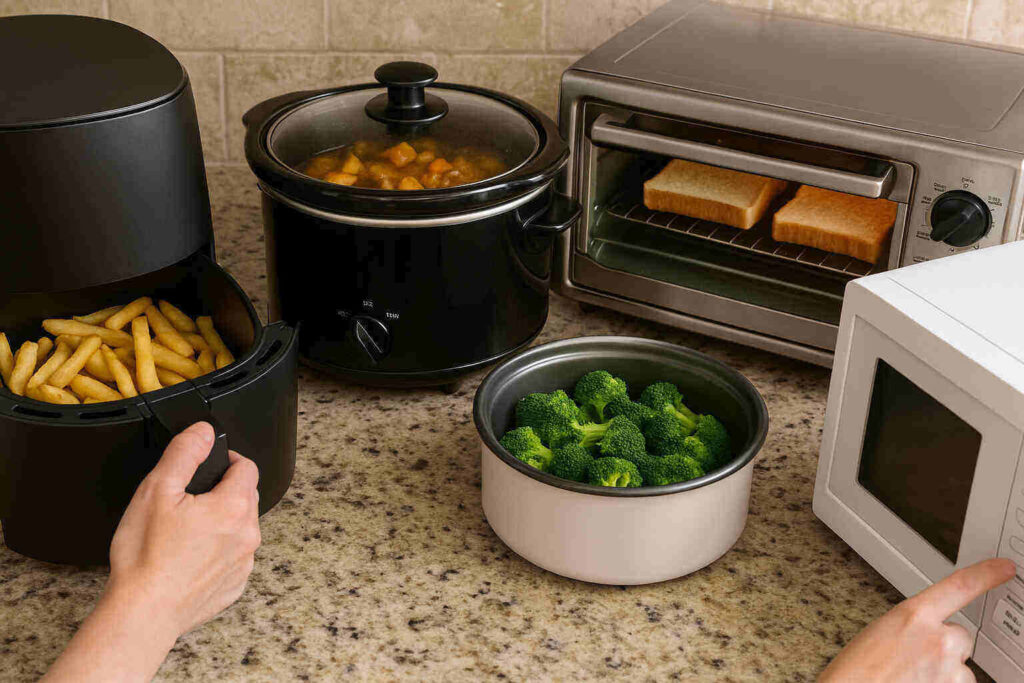
Ovens and stovetops use a lot of energy and generate heat, making your AC work harder in summer. For smaller meals, microwaves, toaster ovens, slow cookers, or air fryers are better options. The EPA states microwaves use up to 80% less energy than ovens for small portions. For reheating, ovens can draw 2,400 watts, while microwaves use about 1,000 watts and cook faster. Slow cookers use minimal power over hours, and air fryers crisp food with less oil and energy than deep fryers, saving money and keeping kitchens cooler.
12. Close Curtains or Blinds

Sunlight through windows can raise indoor temperatures, making your AC work harder. Closing curtains, blinds, or shades blocks heat, keeping rooms cooler and cutting cooling costs. The DOE says well-installed window coverings can reduce heat gain by up to 33%, with thermal curtains and cellular shades being especially effective. On hot days, closed curtains lower room temperature; in winter, open curtains let in warmth during the day and close at night to retain heat. Stylish window treatments also boost privacy and enhance décor while saving energy.
13. Add Insulation to Your Home
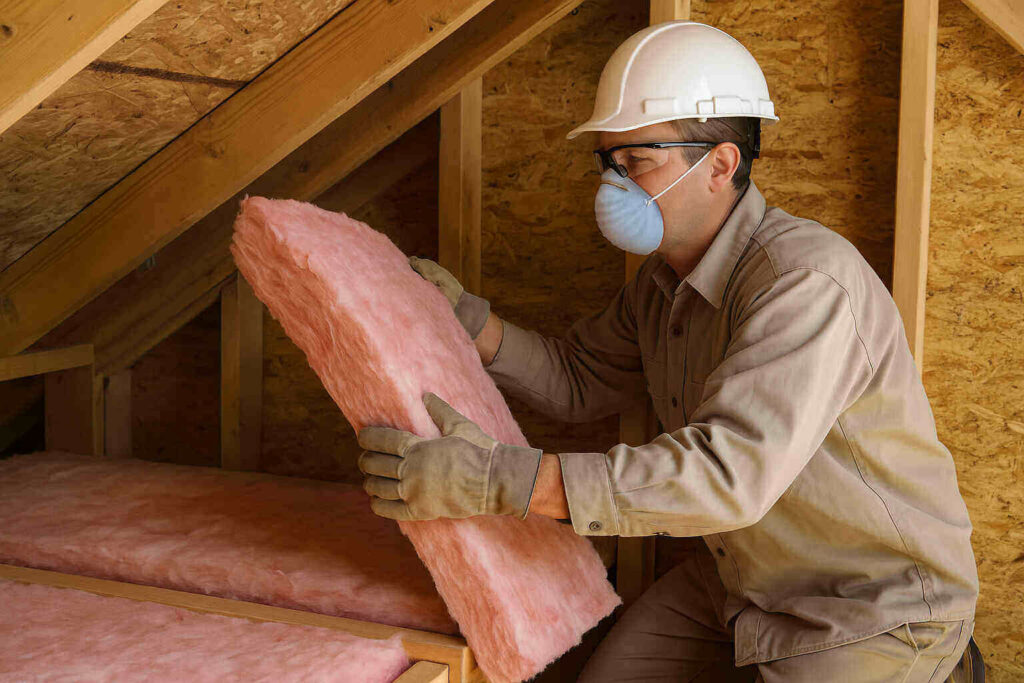
Insulation slows heat flow, keeping homes warm in winter and cool in summer. Poor insulation makes HVAC systems work harder, raising energy bills. The EPA says adding insulation in attics, floors, and crawl spaces can save about 15% on heating and cooling, with older homes seeing more savings. Check DOE maps for recommended insulation levels in your region. While installation costs money upfront, it pays off through lower bills and better comfort. You can do small projects yourself or hire professionals for bigger jobs.
14. Shorten Shower Time
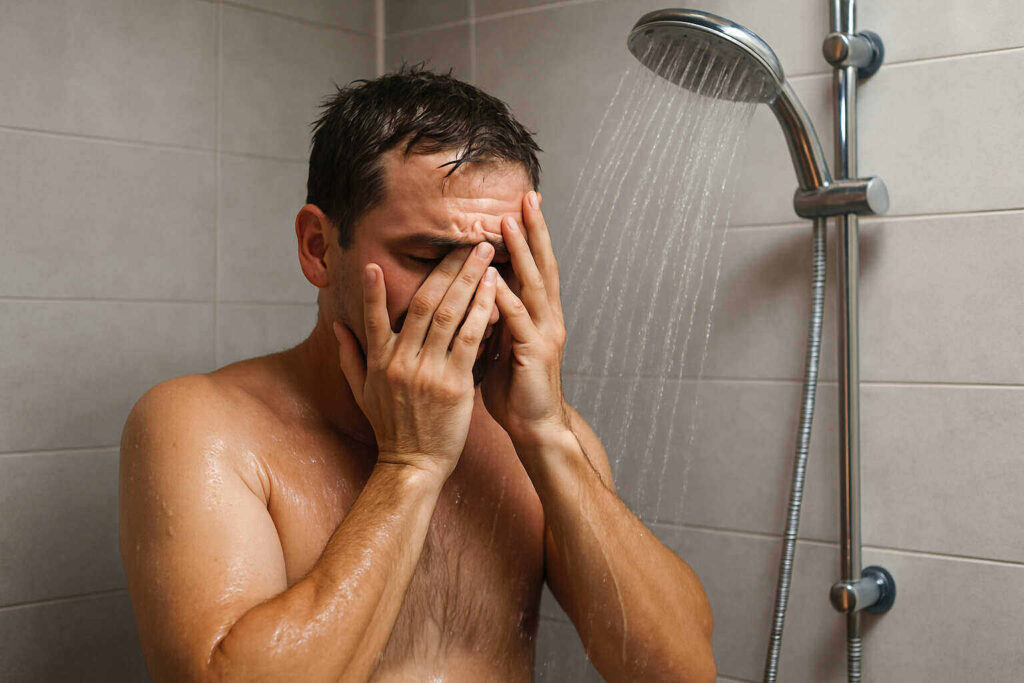
Using hot water raises your energy bills. Shortening showers by a few minutes saves water and energy. A 10-minute shower uses 20–50 gallons, depending on the showerhead. Halving shower time saves hundreds of gallons monthly. The EPA recommends WaterSense showerheads, limiting flow to 2 gallons per minute. Replacing a 5-gpm showerhead with a low-flow model can cut water heating costs by $50–$100 yearly. Shorter showers also reduce humidity, easing AC use. Simple habits like setting a timer or playing a 5-minute song help lower bills.
15. Conduct a Home Energy Audit
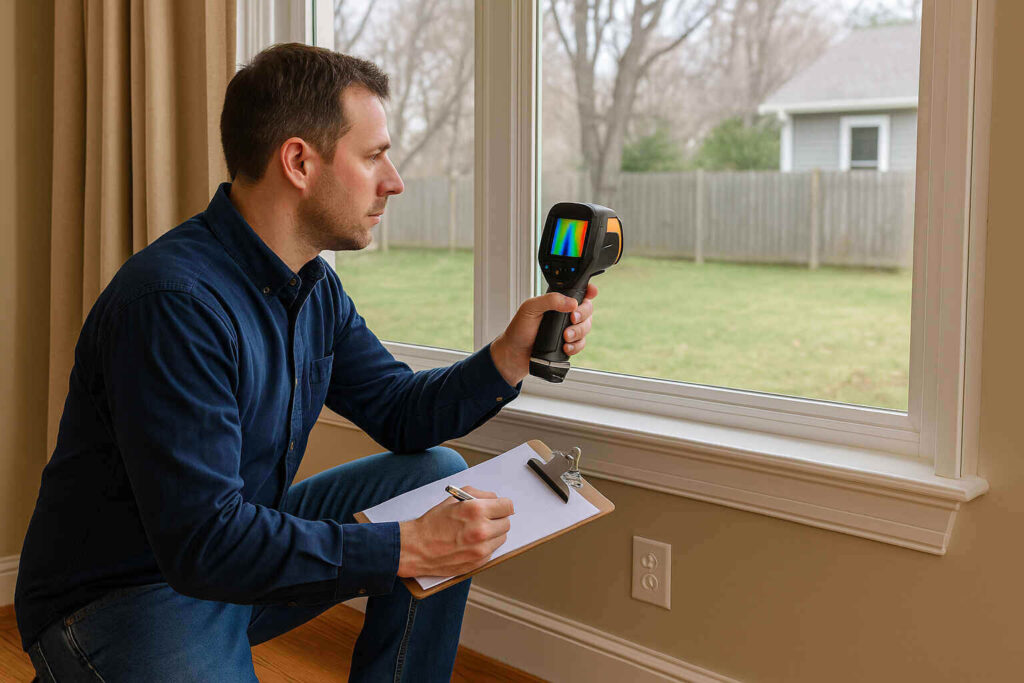
An energy audit reveals where your home loses energy and offers tailored fixes. Many utilities provide free or discounted audits, or you can hire certified experts. Auditors use tools like blower doors and infrared cameras to detect leaks, insulation gaps, and inefficient appliances. The DOE says homeowners can save 5–30% on bills by following audit advice. Instead of guessing, use data-driven recommendations for better savings. If a professional audit isn’t possible, try online tools or DIY checks to find easy energy fixes.
Disclaimer: The information in this article is for general purposes only and does not constitute financial advice. For tailored guidance about your home and energy systems, please consult a qualified expert.

